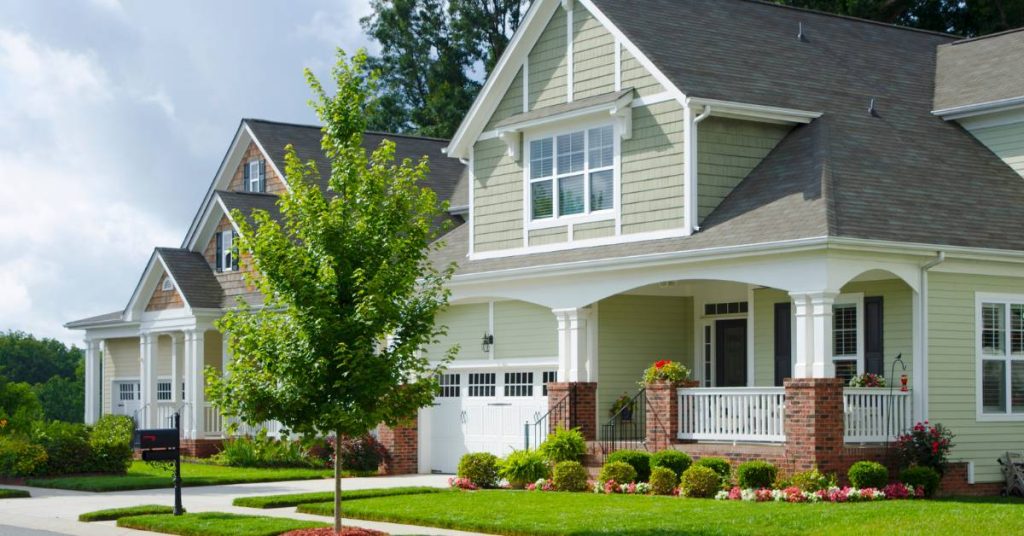Are you a Texan (or transplant) looking for a way to finance the home you’ve always wanted? USDA loans might be your answer.
These loans are designed to help moderate to low-income families purchase homes in areas outside the chaos of the big city, mostly in suburban and rural areas.
But what are the USDA loan limits in Texas? And how can you make the most of this program?
Let’s dive into the max USDA loan limits, answer some questions, and show you how to check eligibility to see if you qualify for one.
How USDA Loan Limits in Texas Work
USDA loan limits in Texas are determined by the county in which the property is located and the cost of living in that area. In general, the more expensive the area, the higher the loan limit.
For example, in most counties in Texas, the USDA loan limit for a single-family home is $386,400. However, in some high-cost areas, such as Austin and Houston, the limits could be higher.
It’s important to note that these limits are based on the appraised value of the property, not the purchase price.
Another thing to keep in mind is that USDA loans have income limits as well. To qualify for a USDA loan in Texas, your household income cannot exceed 115% of the median income for your area.
Texas USDA Maximum Loan Limits for 2025
We created an easy-to-use table so you can search for your county in Texas and view the USDA loan limits for 2025.
| County | Loan Limit |
|---|---|
| Anderson County | $336,500 |
| Andrews County | $336,500 |
| Angelina County | $336,500 |
| Aransas County | $336,500 |
| Archer County | $336,500 |
| Armstrong County | $336,500 |
| Atascosa County | $359,700 |
| Austin County | $336,500 |
| Bailey County | $336,500 |
| Bandera County | $359,700 |
| Bastrop County | $386,400 |
| Baylor County | $336,500 |
| Bee County | $336,500 |
| Bell County | $336,500 |
| Bexar County | $359,700 |
| Blanco County | $336,500 |
| Borden County | $336,500 |
| Bosque County | $336,500 |
| Bowie County | $336,500 |
| Brazoria County | $336,500 |
| Brazos County | $336,500 |
| Brewster County | $336,500 |
| Briscoe County | $336,500 |
| Brooks County | $336,500 |
| Brown County | $336,500 |
| Burleson County | $336,500 |
| Burnet County | $336,500 |
| Caldwell County | $386,400 |
| Calhoun County | $336,500 |
| Callahan County | $336,500 |
| Cameron County | $336,500 |
| Camp County | $336,500 |
| Carson County | $336,500 |
| Cass County | $336,500 |
| Castro County | $336,500 |
| Chambers County | $336,500 |
| Cherokee County | $336,500 |
| Childress County | $336,500 |
| Clay County | $336,500 |
| Cochran County | $336,500 |
| Coke County | $336,500 |
| Coleman County | $336,500 |
| Collin County | $360,600 |
| Collingsworth County | $336,500 |
| Colorado County | $336,500 |
| Comal County | $359,700 |
| Comanche County | $336,500 |
| Concho County | $336,500 |
| Cooke County | $336,500 |
| Coryell County | $336,500 |
| Cottle County | $336,500 |
| Crane County | $336,500 |
| Crockett County | $336,500 |
| Crosby County | $336,500 |
| Culberson County | $336,500 |
| Dallam County | $336,500 |
| Dallas County | $360,600 |
| Dawson County | $336,500 |
| Deaf Smith County | $336,500 |
| Delta County | $336,500 |
| Denton County | $360,600 |
| DeWitt County | $336,500 |
| Dickens County | $336,500 |
| Dimmit County | $336,500 |
| Donley County | $336,500 |
| Duval County | $336,500 |
| Eastland County | $336,500 |
| Ector County | $336,500 |
| Edwards County | $336,500 |
| El Paso County | $336,500 |
| Ellis County | $360,600 |
| Erath County | $336,500 |
| Falls County | $336,500 |
| Fannin County | $336,500 |
| Fayette County | $336,500 |
| Fisher County | $336,500 |
| Floyd County | $336,500 |
| Foard County | $336,500 |
| Fort Bend County | $336,500 |
| Franklin County | $336,500 |
| Freestone County | $336,500 |
| Frio County | $336,500 |
| Gaines County | $336,500 |
| Galveston County | $336,500 |
| Garza County | $336,500 |
| Gillespie County | $336,500 |
| Glasscock County | $336,500 |
| Goliad County | $336,500 |
| Gonzales County | $336,500 |
| Gray County | $336,500 |
| Grayson County | $336,500 |
| Gregg County | $336,500 |
| Grimes County | $336,500 |
| Guadalupe County | $359,700 |
| Hale County | $336,500 |
| Hall County | $336,500 |
| Hamilton County | $336,500 |
| Hansford County | $336,500 |
| Hardeman County | $336,500 |
| Hardin County | $336,500 |
| Harris County | $336,500 |
| Harrison County | $336,500 |
| Hartley County | $336,500 |
| Haskell County | $336,500 |
| Hays County | $386,400 |
| Hemphill County | $336,500 |
| Henderson County | $336,500 |
| Hidalgo County | $336,500 |
| Hill County | $336,500 |
| Hockley County | $336,500 |
| Hood County | $336,500 |
| Hopkins County | $336,500 |
| Houston County | $336,500 |
| Howard County | $336,500 |
| Hudspeth County | $336,500 |
| Hunt County | $360,600 |
| Hutchinson County | $336,500 |
| Irion County | $336,500 |
| Jack County | $336,500 |
| Jackson County | $336,500 |
| Jasper County | $336,500 |
| Jeff Davis County | $336,500 |
| Jefferson County | $336,500 |
| Jim Hogg County | $336,500 |
| Jim Wells County | $336,500 |
| Johnson County | $360,600 |
| Jones County | $336,500 |
| Karnes County | $336,500 |
| Kaufman County | $360,600 |
| Kendall County | $359,700 |
| Kenedy County | $336,500 |
| Kent County | $336,500 |
| Kerr County | $336,500 |
| Kimble County | $336,500 |
| King County | $336,500 |
| Kinney County | $336,500 |
| Kleberg County | $336,500 |
| Knox County | $336,500 |
| La Salle County | $336,500 |
| Lamar County | $336,500 |
| Lamb County | $336,500 |
| Lampasas County | $336,500 |
| Lavaca County | $336,500 |
| Lee County | $336,500 |
| Leon County | $336,500 |
| Liberty County | $336,500 |
| Limestone County | $336,500 |
| Lipscomb County | $336,500 |
| Live Oak County | $336,500 |
| Llano County | $336,500 |
| Loving County | $336,500 |
| Lubbock County | $336,500 |
| Lynn County | $336,500 |
| Madison County | $336,500 |
| Marion County | $336,500 |
| Martin County | $336,500 |
| Mason County | $336,500 |
| Matagorda County | $336,500 |
| Maverick County | $336,500 |
| McCulloch County | $336,500 |
| McLennan County | $336,500 |
| McMullen County | $336,500 |
| Medina County | $359,700 |
| Menard County | $336,500 |
| Midland County | $336,500 |
| Milam County | $336,500 |
| Mills County | $336,500 |
| Mitchell County | $336,500 |
| Montague County | $336,500 |
| Montgomery County | $336,500 |
| Moore County | $336,500 |
| Morris County | $336,500 |
| Motley County | $336,500 |
| Nacogdoches County | $336,500 |
| Navarro County | $336,500 |
| Newton County | $336,500 |
| Nolan County | $336,500 |
| Nueces County | $336,500 |
| Ochiltree County | $336,500 |
| Oldham County | $336,500 |
| Orange County | $336,500 |
| Palo Pinto County | $336,500 |
| Panola County | $336,500 |
| Parker County | $360,600 |
| Parmer County | $336,500 |
| Pecos County | $336,500 |
| Polk County | $336,500 |
| Potter County | $336,500 |
| Presidio County | $336,500 |
| Rains County | $336,500 |
| Randall County | $336,500 |
| Reagan County | $336,500 |
| Real County | $336,500 |
| Red River County | $336,500 |
| Reeves County | $336,500 |
| Refugio County | $336,500 |
| Roberts County | $336,500 |
| Robertson County | $336,500 |
| Rockwall County | $360,600 |
| Runnels County | $336,500 |
| Rusk County | $336,500 |
| Sabine County | $336,500 |
| San Augustine County | $336,500 |
| San Jacinto County | $336,500 |
| San Patricio County | $336,500 |
| San Saba County | $336,500 |
| Schleicher County | $336,500 |
| Scurry County | $336,500 |
| Shackelford County | $336,500 |
| Shelby County | $336,500 |
| Sherman County | $336,500 |
| Smith County | $336,500 |
| Somervell County | $336,500 |
| Starr County | $336,500 |
| Stephens County | $336,500 |
| Sterling County | $336,500 |
| Stonewall County | $336,500 |
| Sutton County | $336,500 |
| Swisher County | $336,500 |
| Tarrant County | $360,600 |
| Taylor County | $336,500 |
| Terrell County | $336,500 |
| Terry County | $336,500 |
| Throckmorton County | $336,500 |
| Titus County | $336,500 |
| Tom Green County | $336,500 |
| Travis County | $386,400 |
| Trinity County | $336,500 |
| Tyler County | $336,500 |
| Upshur County | $336,500 |
| Upton County | $336,500 |
| Uvalde County | $336,500 |
| Val Verde County | $336,500 |
| Van Zandt County | $336,500 |
| Victoria County | $336,500 |
| Walker County | $336,500 |
| Waller County | $336,500 |
| Ward County | $336,500 |
| Washington County | $336,500 |
| Webb County | $336,500 |
| Wharton County | $336,500 |
| Wheeler County | $336,500 |
| Wichita County | $336,500 |
| Wilbarger County | $336,500 |
| Willacy County | $336,500 |
| Williamson County | $386,400 |
| Wilson County | $357,500 |
| Winkler County | $336,500 |
| Wise County | $360,600 |
| Wood County | $336,500 |
| Yoakum County | $336,500 |
| Young County | $336,500 |
| Zapata County | $336,500 |
| Zavala County | $336,500 |
What Next?
If you’re considering applying for a USDA loan in Texas, it’s important to have a clear understanding of the loan limits in your area. We want to make sure that you have all the information you need to make informed decisions about your finances. That’s why we’ve provided an easy-to-use table that outlines the USDA loan limits for each county in Texas.
However, we understand that sometimes you may have questions or concerns that aren’t addressed in our resources. That’s why we encourage you to get in touch with us if you have any questions about USDA loan limits in Texas or the application process. Our team of experts is always here to help and provide guidance along the way.
Frequently Asked Questions
What are the income limits for USDA loan in Texas?
The income limits for USDA loan in Texas vary depending on the county and the number of people in the household. Generally, the maximum income limit is 115% of the median income for the area.
How much can you borrow with USDA loan?
The amount that can be borrowed with a USDA loan depends on the borrower’s income, the property’s location, and other factors. However, the loan amount cannot exceed the appraised value of the property.
What is the highest loan amount for USDA?
The highest loan amount for USDA loan is not fixed as it varies based on the appraised value of the property and other eligibility criteria such as income limits, credit history, and debt-to-income ratio.
Is USDA loan hard to get?
No, getting approved for a USDA loan can be sometimes harder due to the restrictions, but it’s not necessarily hard to get. Eligibility criteria such as credit score, debt-to-income ratio, and income limits must be met. However, USDA loans are specifically designed to help low to moderate-income families in rural areas achieve homeownership. As such, those who meet the eligibility criteria may find it easier to qualify for a USDA loan than for other types of loans.






